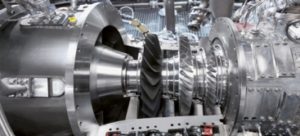
Using new technologies to realize innovative engine concepts allows manufacturers of aircraft engines to have a major influence on increasing resource efficiency in air transportation. Integrated design as established with the Blisk (blade integrated disk) in the past years leads to more complex geometries and manufacturing challenges. Additionally the use of new materials requires continuous development of machining processes. To ensure sustainable cost efficiency of manufacturing processes, the application potential of relevant technologies has to be monitored continuously and to be benchmarked in terms of productivity and manufacturing cost.
Researchers at the Fraunhofer Institute for Production Technology IPT in Aachen have compared different process chains from an economic and technological point of view – along with their colleagues from the tool machine laboratory WZL at RWTH Aachen and EMAG ECM GmbH. “We looked at a total of seven different process chains based on a Blisk made of nickel”, explained Daniel Heinen, manager of the business unit Turbomachinery at IPT. To achieve an objective comparison, the research team looked at a few promising alternatives alongside conventional milling from a solid block: electrochemical machining ECM, water jet machining, and wire-based laser metal deposition, a manufacturing process for the layer-wise build-up of the blades. In each of these processes, however, the surfaces have to be reworked, for example by automated polishing or by precise electrochemical machining PECM.
A specially developed software made it possible to calculate the resource requirements of the different manufacturing process chains and technologies in a comparable way. Here the researchers recorded all the information for each process chain: economic and environmental constraints, such as the cost of the machinery, the production times, the expense of CAD/CAM programming or the number of components to be manufactured – allowing not only the production cost to be identified, but also the primary energy demand and the CO2 balance.
Manufacturing costs could be halved by innovative process chains
“The comparison shows: production costs could be halved by conducting idealized or innovative process chains”, Daniel Heinen concludes. A large proportion are fixed machine costs: depending on the process chain, these can vary between 20 and 70 percent. The assessment methodology is independent of the component shape and can be easily adapted to different geometries and manufacturing processes and changes in volumes. By studying the individual processes technologically, the researchers can also identify resource requirements for the manufacture of alternative component geometries more specifically, deduce dependencies of various production processes and thus help companies make a decision when it comes to choosing the right process.



